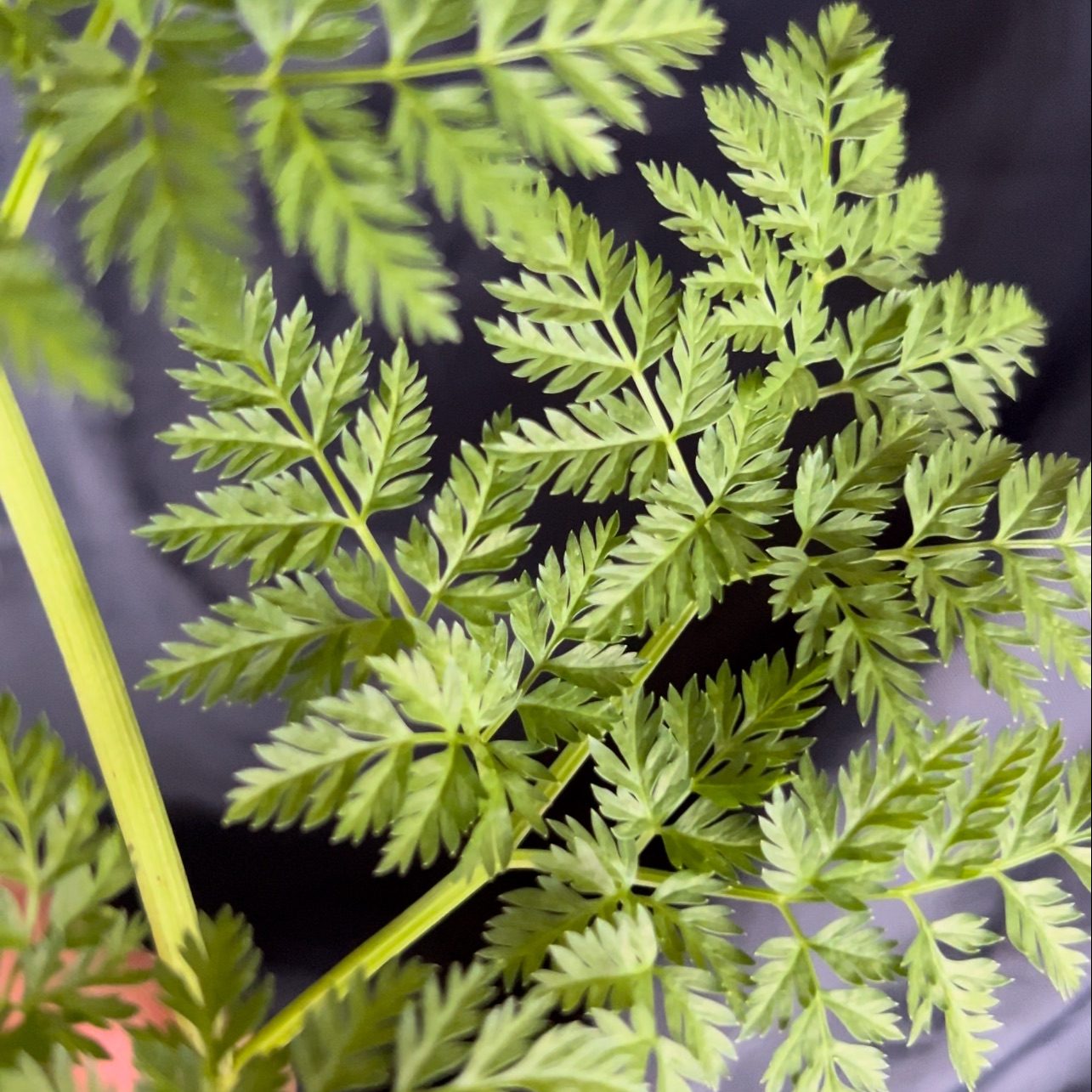”Hemlock (Conium Maculatum) is one of the most poisonous plants in the world and it’s everywhere. For me it’s a pretty sensible place to start a conversation amongst a group as it has significant similarities to others in it’s family which has loads of tasty edibles but many poisonous too (Carrot family, Umbellifer or Apiaceae family).
GeorgeFlavour Fred
When asking for suggestions for familiarity of the leaf structure most people say carrot and cow parsley/wild chervil. This is where I stress the importance of identification and checking every identifier off the list as there are variables on each (e.g. less/no spotting on poison hemlock when young). These plants look very similar at this time in the year and not all factors are easy to note so making sure you have them all is of the upmost importance. I generally say it’s not worth the risk when starting out.
Here’s the identifiers
COW PARSLEY (EDIBLE)
Feathery leaves versus intricate lace-like of the poison hemlock
Fine hairs on leaves and stem
Celery grooved stem and in this instance a purple gradient (not purple spotting)
POISON HEMLOCK (DEADLY)
Far more intricate, finely divided and toothed on edges
No hairs (baldshiny)
Round hollow stem
Stem has purple spotting (not present when very young)
Poison Hemlock also smells strong and pretty horrific… like mouse urine …apparently – not my definition.
This is the most dangerous period for mixing up the two plants as Poison Hemlock eventually grows 2-3m high depending on location.
In Poison Hemlock the danger is from the alkaloid “coniine” which when ingested, along with extended exposure, of this poisonous compound will start off as headaches and lack of muscle control due neurological failure. Respiratory failure will occur in extreme toxification resulting in death. The route and pain to that point is pretty horrific too for which there is a few documented cases.


